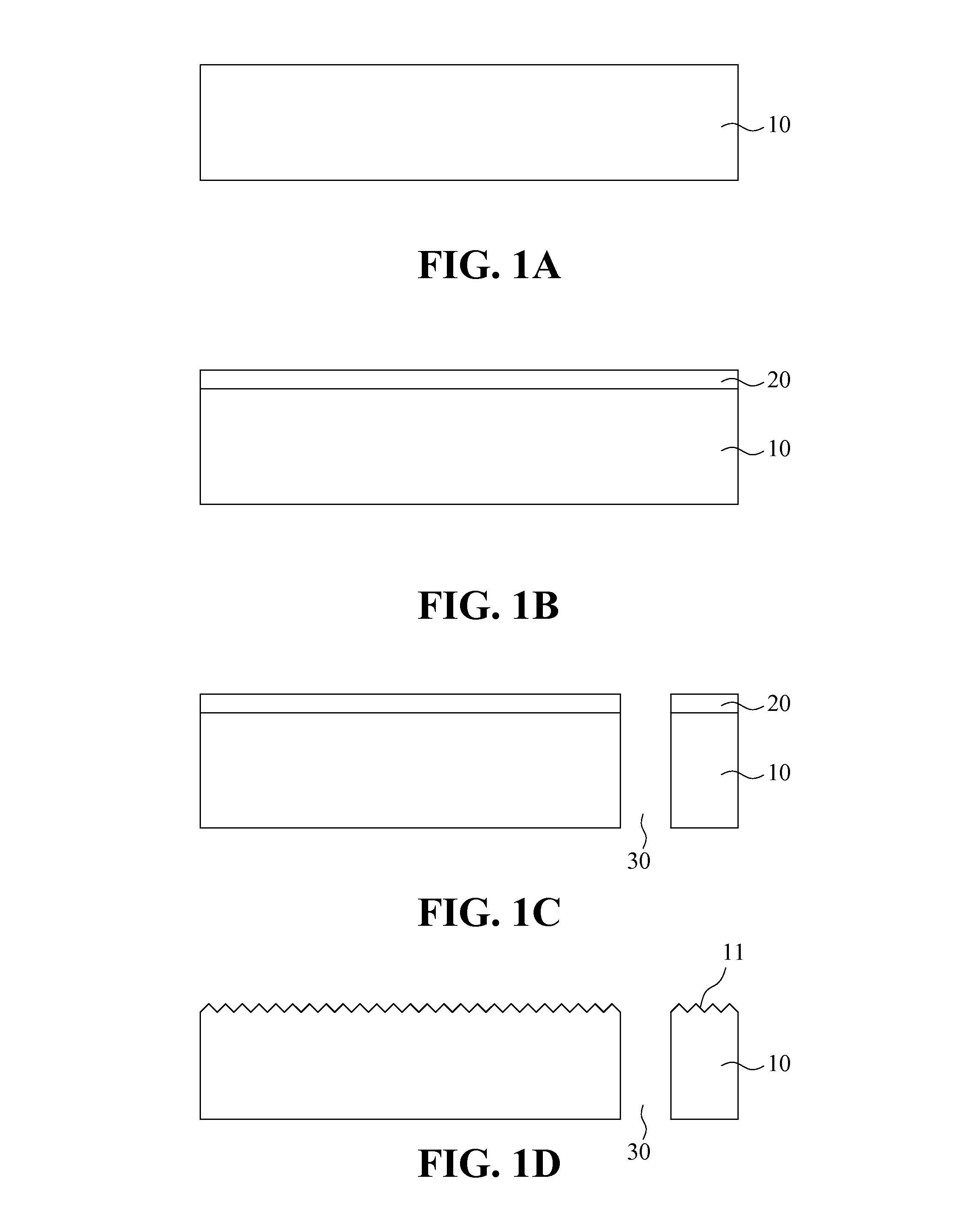Method For Forming Package Substrate With Ultra-Thin Seed Layer
a technology of package substrate and seed layer, which is applied in the direction of printed circuit, electrical apparatus, printed circuit aspects, etc., can solve the problems of low low wiring density, and achieve the effect of increasing the yield of package substrate with fine circuit lines
- Summary
- Abstract
- Description
- Claims
- Application Information
AI Technical Summary
Benefits of technology
Problems solved by technology
Method used
Image
Examples
first embodiment
[0015]FIGS. 1A to 1H are cross-sectional views illustrating a method of forming a package substrate with an ultra-thin seed layer according to the present invention. Referring to FIGS. 1A to 1 H, a metal foil 20 is laminated on a surface of a substrate 10. Then, at least one via hole 30 (for example, via hole 30 as shown in FIG. 1C) is formed through the substrate 10 and the metal foil 20. Subsequently, the metal foil 20 is etched away, so that the substrate 10 has a rough surface 11. In other words, when the metal foil 20 is etched away from the substrate 10, the surface of the substrate 10 becomes rough, as shown in FIG. 1D.
[0016]Then, an ultra-thin seed layer 25 is formed on the rough surface 11 of the substrate 10 and an sidewall of the at least one via hole 30, and the ultra-thin seed layer 25 is made of electrically conductive material. The ultra-thin seed layer 25 is formed along the rough surface 11 of the substrate 10, and thereby the ultra-thin seed layer 25 also has a rou...
second embodiment
[0019]FIGS. 2A to 2G are cross-sectional views illustrating a method of forming a package substrate with an ultra-thin seed layer according to the present invention. Referring to FIGS. 2A to 2G, a first metal foil 22 and a second metal foil 24 are laminated onto a top surface and a bottom surface of the substrate 10, respectively. Then, at least one via hole 35 (for example, via hole 35 as shown in FIG. 2B) is formed through the substrate 10, the first metal foil 22, and the second metal foil 24. Subsequently, the first metal foil 22 and the second metal foil 24 are etched away, so that the substrate has a rough top surface 13 and a rough bottom surface 15. In other words, when the first metal foil 22 and the second metal foil 24 are etched away from the substrate 10, the top and bottom surfaces 13 and 15 of the substrate 10 become rough, as shown in FIG. 2C.
[0020]Then, an ultra-thin seed layer 27 is formed on the rough top surface 13 and the rough bottom surface 15 of the substrate...
PUM
| Property | Measurement | Unit |
|---|---|---|
| thickness | aaaaa | aaaaa |
| thickness | aaaaa | aaaaa |
| electrically conductive | aaaaa | aaaaa |
Abstract
Description
Claims
Application Information
 Login to View More
Login to View More - R&D
- Intellectual Property
- Life Sciences
- Materials
- Tech Scout
- Unparalleled Data Quality
- Higher Quality Content
- 60% Fewer Hallucinations
Browse by: Latest US Patents, China's latest patents, Technical Efficacy Thesaurus, Application Domain, Technology Topic, Popular Technical Reports.
© 2025 PatSnap. All rights reserved.Legal|Privacy policy|Modern Slavery Act Transparency Statement|Sitemap|About US| Contact US: help@patsnap.com



